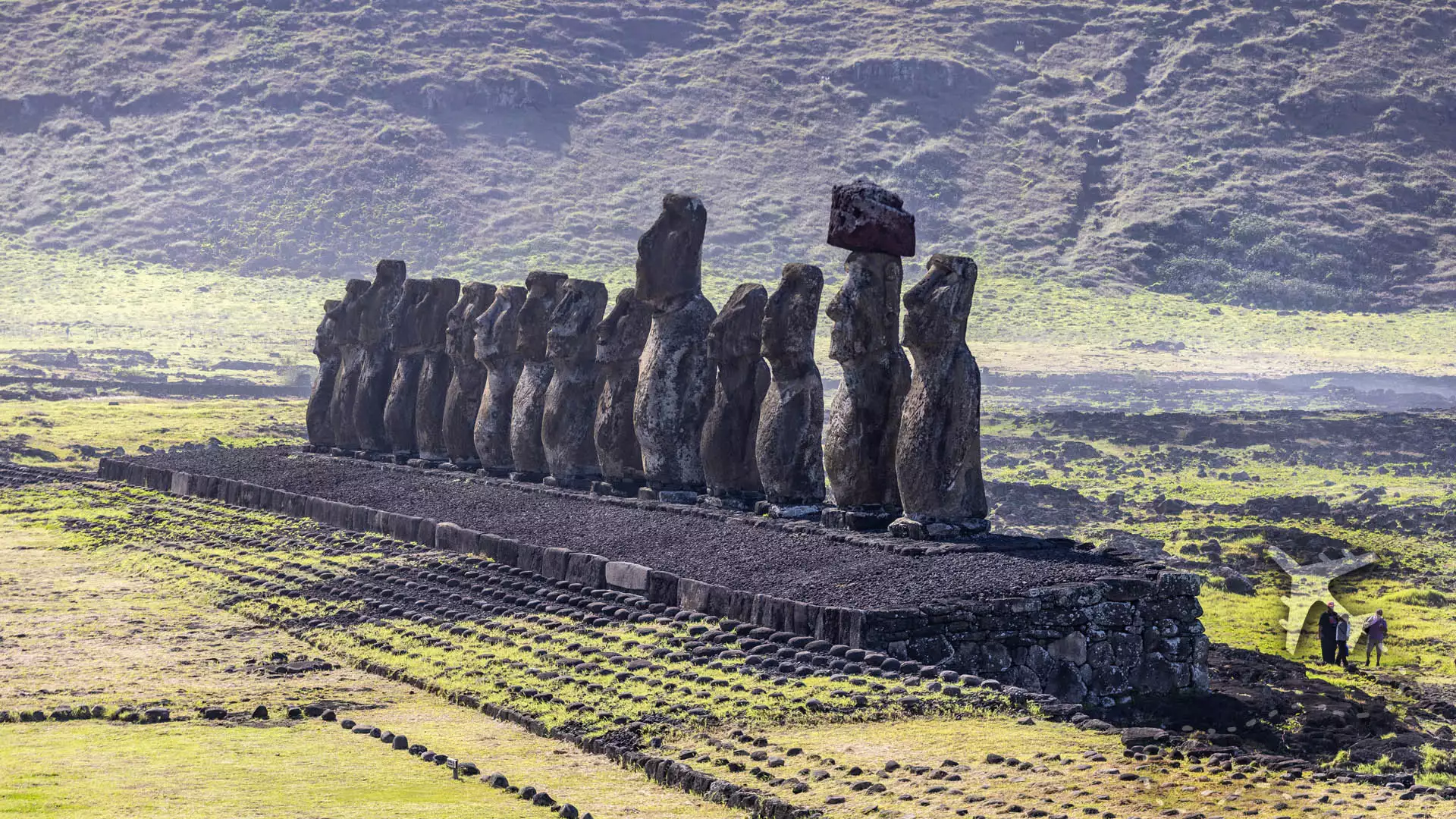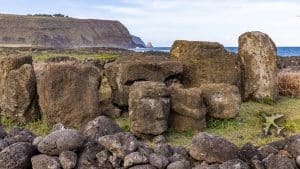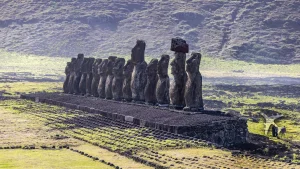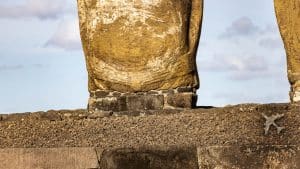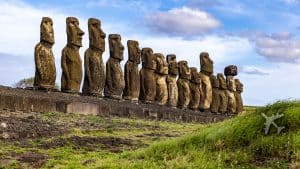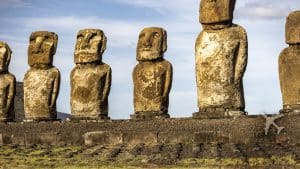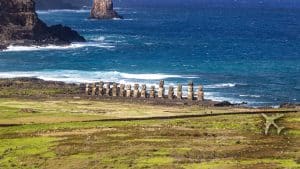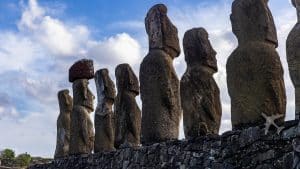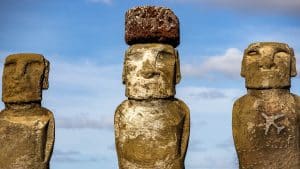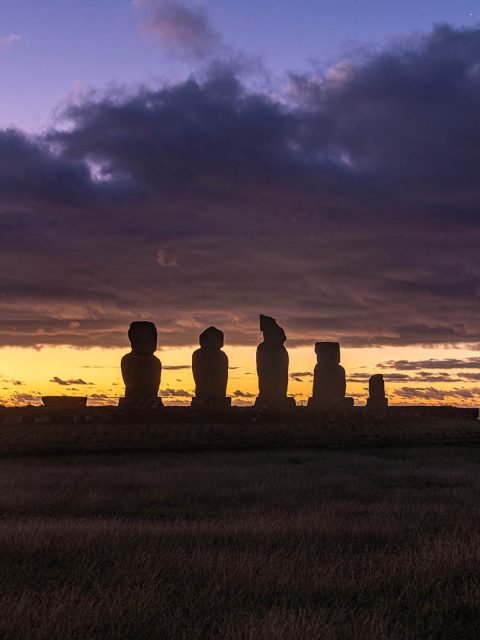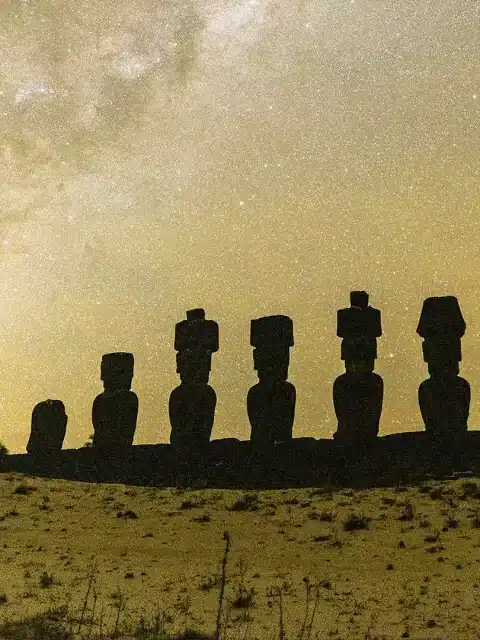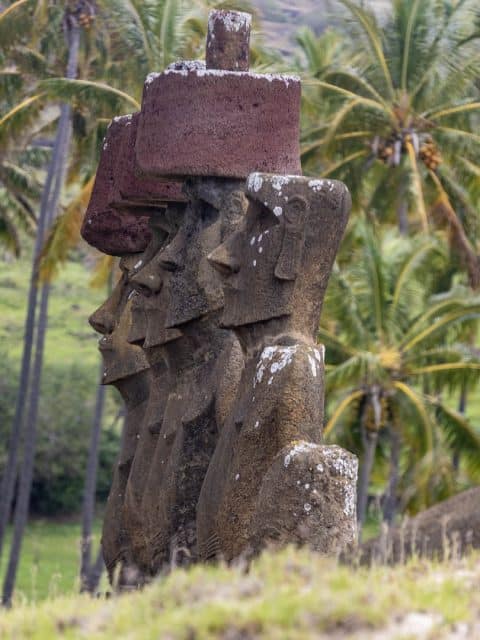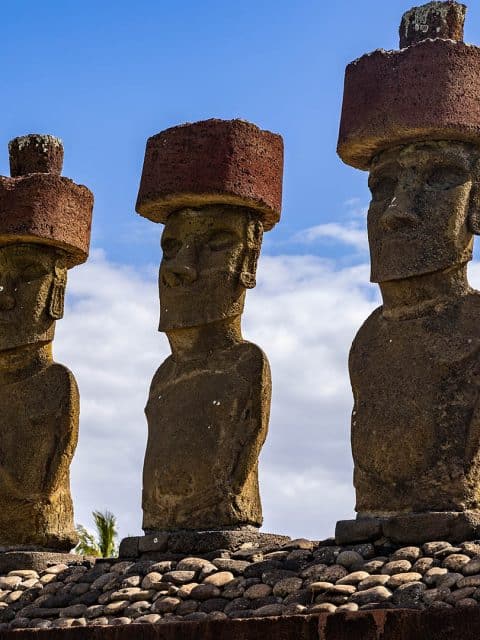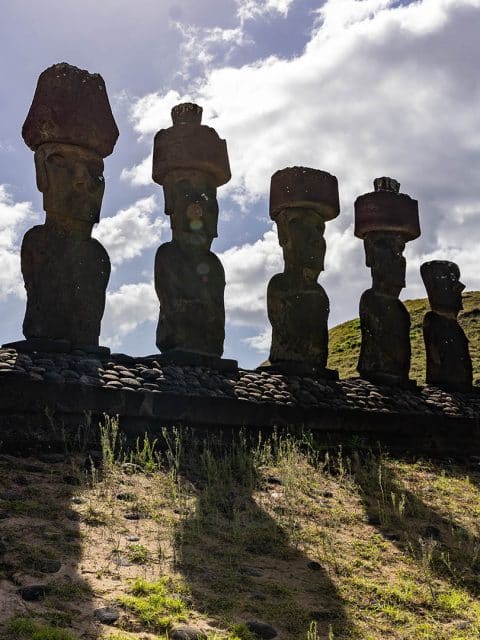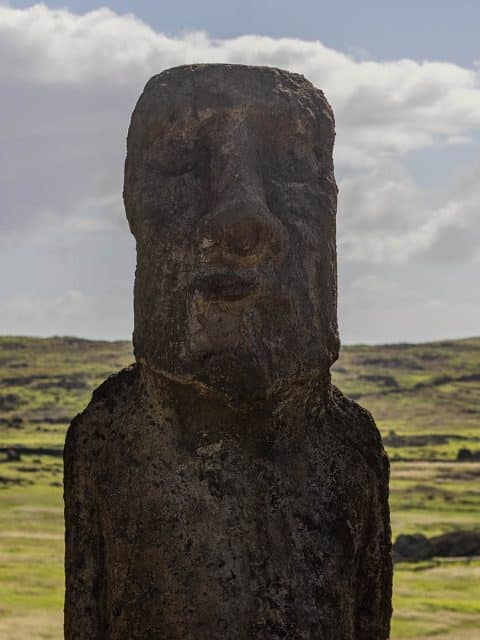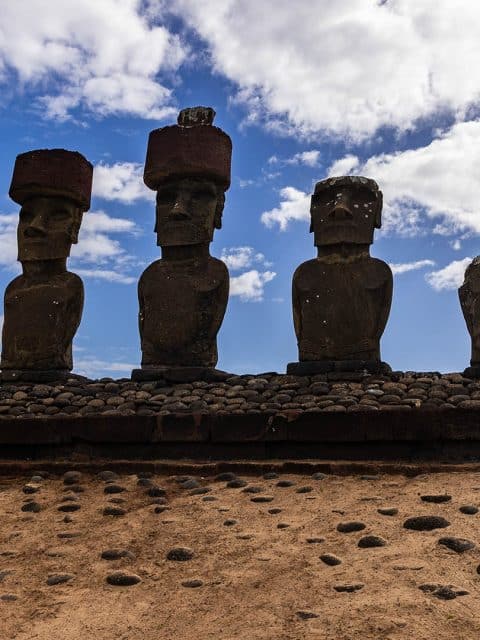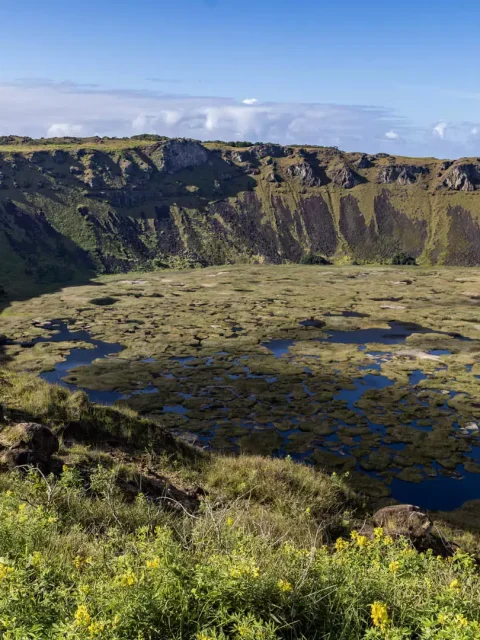Nestled on Easter Island’s remote, windswept coastline (Rapa Nui), Ahu Tongariki stands as a breathtaking testament to the island’s cultural and architectural legacy. The largest ceremonial platform on the island, Ahu Tongariki, is home to an iconic line of 15 moai statues that seem to gaze out over the Pacific with a timeless sense of purpose and grandeur. For travelers and cultural enthusiasts alike, a visit to Ahu Tongariki is more than just sightseeing—it’s a journey into the heart of one of the world’s most enigmatic civilizations.
The History Behind Ahu Tongariki
The story of Ahu Tongariki begins with the Rapa Nui people, the original Polynesian settlers of Easter Island. Arriving as early as the 10th century, they brought traditions, tools, and the ability to navigate vast ocean expanses. Over the centuries, they developed a unique culture centered around the worship of ancestors, represented by colossal statues called moai.
Built between the 13th and 15th centuries, Ahu Tongariki became one of the island’s most significant ceremonial platforms (ahu). The ahu were sacred sites where the spirits of ancestors were believed to reside, and the moai erected atop them honored these ancestors, ensuring protection and prosperity for their descendants.
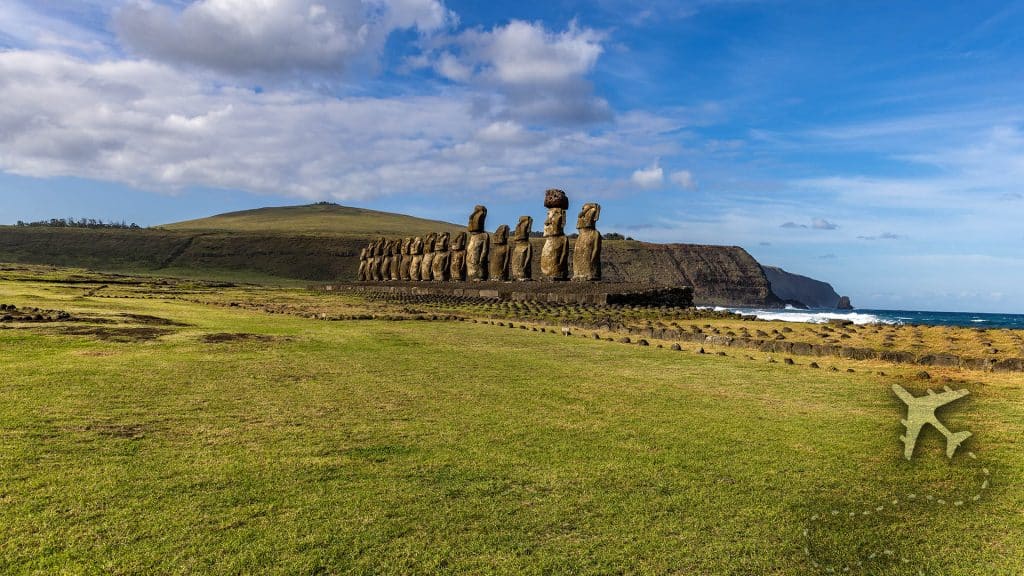
However, by the late 17th century, Easter Island experienced societal collapse due to deforestation, resource depletion, and internal conflict. Many moai, including those at Ahu Tongariki, were toppled during this period—a mystery that still puzzles historians today.
The Destruction and Restoration
Ahu Tongariki’s story took a devastating turn in 1960 when the Valdivia earthquake in Chile triggered a tsunami that swept across the island. The colossal wave scattered the moai across the site, leaving the once-great ahu in ruin.
Fortunately, in the early 1990s, a remarkable restoration project began. With the help of the Japanese government and a team of skilled archaeologists, engineers, and local Rapa Nui people, Ahu Tongariki was painstakingly rebuilt. By 1996, the 15 moai were returned to their original positions, standing proud once more. One of the statues, the heaviest on the island, weighs an astonishing 86 tons!
How Were the Moai Created?
The creation of the moai is a feat of human ingenuity and determination. Carved from volcanic tuff found in the Rano Raraku quarry, the moai were sculpted using simple basalt tools over months, sometimes years. Once completed, the statues were transported across the island, a monumental task given their size and weight. While the exact method remains debated, theories suggest the Rapa Nui used a combination of sleds, ropes, and human power to “walk” the moai to their respective ahu.
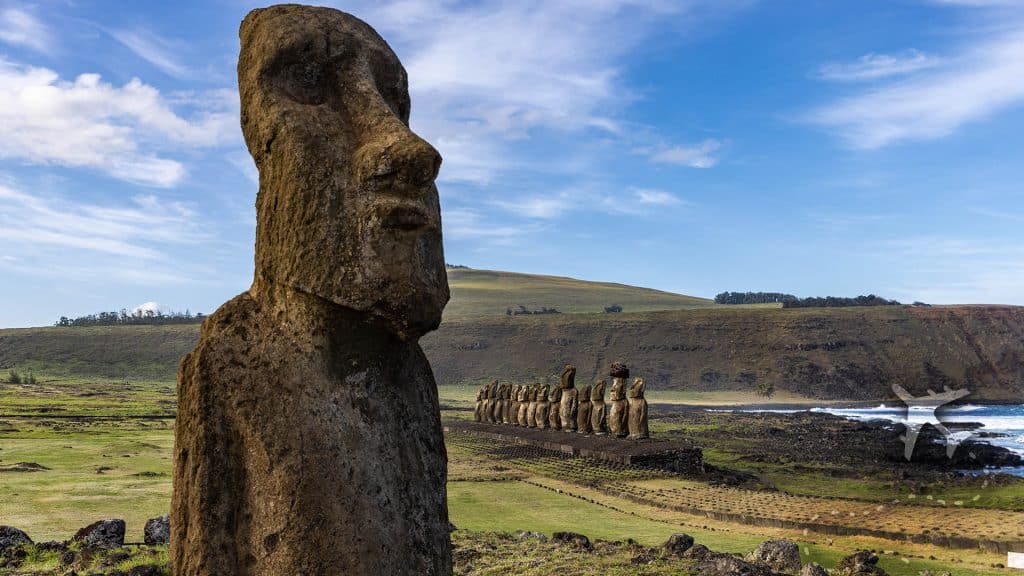
Each moai at Ahu Tongariki is unique, with subtle differences in facial features, size, and details that reflect the artistry of their creators. Some once wore pukao (cylindrical red stone hats), adding a greater sense of stature and importance.
Why Visit Ahu Tongariki?
There are countless reasons why Ahu Tongariki should be at the top of any traveler’s bucket list:
- Unparalleled Sunrise Views: Ahu Tongariki is famous for its ethereal sunrises. As the sun rises over the Pacific Ocean, the moai are silhouetted against the fiery orange and pink sky, creating an unforgettable spectacle. It’s a magical moment that photographers and travelers alike cherish.
- Cultural Connection: Standing before these towering statues, visitors can feel a deep connection to the Rapa Nui people, their traditions, and their resilience. Ahu Tongariki is more than an archaeological site—it’s a bridge to the past, allowing us to honor a people who achieved greatness against all odds.
- Immersive History: The site’s restoration offers a powerful story of preservation and respect for cultural heritage. Exploring Ahu Tongariki is an opportunity to witness both the creative brilliance and the collaborative efforts that brought these moai back to life.
- Awe-Inspiring Scale: No photograph can truly capture the scale and presence of Ahu Tongariki. The sheer size of the moai, the majesty of their alignment, and the surrounding volcanic landscapes combine to create a humbling and inspiring experience.
Plan Your Visit
The best time to visit Ahu Tongariki is sunrise, which offers breathtaking views. Easter Island itself is accessible via flights from Santiago, Chile, making it a remote yet worthwhile adventure. Once on the island, guided tours are highly recommended to provide insight into the site’s history, significance, and secrets.
CURRENT WEATHER
light rain (24 C / 75 F)AIR QUALITY
Moderate (54)GPS COORDINATIONS
-27.1258, -109.2770
HIGH SEASON (MOST EXPENSIVE)
December – March
LOW SEASON (LEAST EXPENSIVE)
April – November
A Journey Worth Taking
Ahu Tongariki is more than just a collection of statues—it is a living legacy of the Rapa Nui people, a symbol of their artistry, beliefs, and perseverance. Whether you’re a history buff, cultural explorer, or avid traveler, standing before the moai at Ahu Tongariki is an experience that will stay with you long after you leave. In a world of constant change, this sacred site reminds us of the enduring power of human ingenuity and our connection to those who came before us.
Frequently Asked Questions
It took almost 500 years for Ahu Tongariki to be built, sometime between 1000-1500 A.D.
Ahu Tongariki was the ceremonial center of the town. The pedestal with the 15 moai was the central location in the surrounding town.
Located on the Northeast side of Easter Island, it is easily reachable via car.
The protected natural park requires a permit that is USD $80 for foreign visitors. Additionally, a local guide must accompany visitors into the national park.


